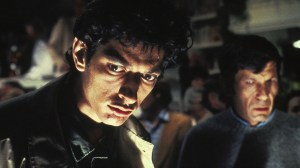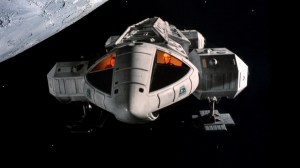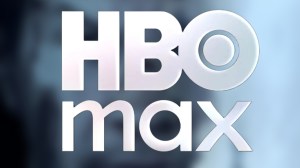In less than an hour, the first public screenings of Patty Jenkins’s long-awaited Wonder Woman will hit U.S. theaters, giving audiences their first major female-led superhero film in years.
Videos by ComicBook.com

Not ever, though; while it’s easy enough to remember duds like Elektra and Catwoman becuase they were fairly recent, the popularity of superhero movies has been rising and falling in waves for years.
Wonder Woman is not only the first time the most famous superheroine of all has come to the big screen, but the first time since the current generation — more or less kickstarted with Batman Begins in 2005 or the start of Marvel Studios with 2008’s Iron Man — that a female-led superhero film has hit the theaters.
But in the years before Catwoman — hell, before the first blockbuster Batman movie, for that matter — Helen Slater was Kara Zor-El in 1984’s Supergirl.
The film has a paltry 7% rating on Rotten Tomatoes and not the best reputation among fans, although the campy spinoff to Alexander and Ilya Salkind’s Superman film series certainly has its defenders, Supergirl TV series executive producer Andrew Kreisberg among them.
“Having Helen Slater and having Dean Cain — because honestly that Supergirl movie obviously has its many flaws but when I was a kid, I didn’t realize those flaws as much and I used to watch it all the time,” Kreisberg told ComicBook.com back in season 1. “I watched Lois and Clark. Having a sense of history I think has been part of our success. I think it’s said to the fans out there that we are fans, and we really are. There’s a couple of shout-outs to the Supergirl movie coming up that I think the fans are going to be excited about.”
More than 30 years later, Wonder Woman is hitting theaters and is the first major American superhero film to have both a female lead and positive reviews…so it seemed like time to take a look back at Supergirl, and we found some stuff that was actually pretty fun.
THE OMEGAHEDRON
If you re-watch this movie and recognize the Omegahedron — that’s the film’s MacGuffin, which powers Argo City and falls into the hands of a Midvale City witch named Selena — is one of two great power-sources vital to Argo City.
Kara accidentally loses the Omegahedron at the start of the film after it’s stolen by her teacher Zaltar. He’s sent to the Phantom Zone, and she heads to Earth to recoer it.
Along with its partner, the Alphahedron, the Omegahedron powers the entire city, its devices and provides its people with light, heat, air, and all the things necessary to survive. While on the surface the Omegahedron seems to create life, it only creates the appearance of life, a ‘fancy shadow of the real thing.’ Human science cannot explain how the Omegahedron works, in fact compared to our present technology it is indistinguishable from magic.
From the Superman Wiki, here’s a quick rundown of its abilities:
to generate unlimited energy.
to power devices on Earth such as cars, telephones, lights etc…
to convert energy to matter, and matter to energy.
convert one form of energy into another (potential energy into kinetic, etc.)
to re-arrange matter on a subatomic level.
to manipulate and control human biology.
to enable travel between dimensions.
to manipulate all forms of energy such electricity, magnetism, light, gravity, etc….
With these abilities, the wicked sorceress Selena was able to create fire from her fingertip, teleport Ethan from place to place, summon an invisible construct of her will, animate and control a bulldozer, cause Ethan to love her, banish Supergirl to the Phantom Zone, remotely view people and activities in her mirror from a faraway distance, and conjure material things out of thin air to name a few.
In addition, the Omegahedron seems to have the capacity to interface with the human mind and respond to human thoughts. A person is able to either mentally or verbally express their desires to the Omegahedron and it will comply with that person’s intent in accordance with that individual’s concept of reality. The Omegahedron seems to be limited only by the imagination of the person who wields its power.
The device popped up again on the Supergirl TV series, in the possession of Non, the husband of Supergirl’s aunt. It was not a major part of the plot in the way it was for the movie, but helped to power the Myriad project and was clearly the same device: it not only shared a name, but was actually designed to resemble the one from the film.

THIS IS DEFINITELY IN-CONTINUITY WITH THE DONNER SUPERMAN MOVIES
There is absolutely no doubt that before shared universes were a thing, this Supergirl movie took place in the same world as the Superman movies it obliquely references.
While Christopher Reeve did not appear in the film per se, there is a scene in which Kara/Linda sees a poster of the Man of Steel hanging on a wall and is awestruck by finally seeing her cousin for the first (?) time.
We doubt it’s actually the first time; it seems more likely than not that, like in the Silver Age comics that inspired the film, the citizens of Argo City had somehow managed to remain keyed in to Kal-El’s life and career. Linda immediately knows that Kal-El is also called Superman (and Clark Kent), and other things that we don’t see her learning onscreen.
Marc McClure, who played Jimmy Olsen in those Superman movies, joined the cast of Supergirl to reprise his role (here, he’s dating Lucy — which is kind of weird considering what the apparent age difference is, but try not to think too much about that.
McClure would continue returning to the DC Universe for years; he played Dax-Ur in Smallville, and Emily’s father in an episode of Powerless. As you can see below, except for his hair color, he still looks basically the same.

THERE WAS A MARVEL COMICS EASTER EGG
Back before Easter eggs were a thing, Supergirl featured a blink-and-you’ll-miss-it appearance by…The Incredible Hulk?!
Yeah, when Mr. Danvers (the principal at her boarding school, not Supergirl’s dad. In the movie, she’s called Linda Lee) brings Linda to her room to introduce her to her roommate, it’s like a little gathering of comic book references.
The roommate is Lucy Lane, the sister of Lois Lane, and it’s here that we see the aforementioned Superman poster.
She’s not thrilled to see Linda (she didn’t think she would have to have a roommate), and plops down on her bed to read a comic book.
The comic is really just a prop — it’s something that she can have in front of her face, so that she can drop it later and have a funny reaction upon learning that Linda is Clark Kent’s cousin.
But the comic is also a Marvel Comic, and features The Incredible Hulk.
Getting a Marvel Comic cleared by legal to appear in a DC movie would probably be next to impossible these days…not to mention the fan explosion on Twitter when it happened.

SOMEBODY TRIED TO RAPE SUPERGIRL
This was the ’80s, and so it’s one of those situations where these scenes were more common and less scrutinized, but…yeah. The first humans Supergirl interacted with, tried to rape her.
Her inexplicable behavior and her lack of understanding of almost anything they were saying or what was going on around her (everything on Earth was new to her, after all) didn’t seem to faze these two truckers at all, who attempted to lift her skirt, made sexually suggestive comments, and advanced on her before trying to fight her and finding out that was a really bad idea.
Oddly, one of those would-be rapists — who is most recognizable to ’90s kids as Big Russ Thompson in Honey I Shrunk the Kids — would later reappear in a DC movie…as Moloch in Watchmen, from Man of Steel director Zack Snyder.
He also provided the voices for Sid the Squid in Batman: The Animated Series and The Leader in numerous Marvel animated projects including The Incredible Hulk and Iron Man cartoons.

THE STORY WAS BANANAS
There’s a lot of camp — both becuase that’s how superhero movies were made at that point and because it was based largely on Silver Age comics.
As has been noted many times in the past, Silver Age comics weren’t “grounded” in the reality that the tight continuity of a shared comic book universe as we now know it tends to demand. Rather than believability, continuity, or logic, they prized creativity.
This resulted in some great stories, some awful stories, and a whole lot of crazy on both sides of that equation.
In the case of this movie? Well, it remained true to that spirit. We didn’t get as much Kryptonian worldbuilding as you did in the Supergirl TV show, but there was a look at Argo City, which was floating in its own “inner space” (as opposed to outer space) of Zaltar’s design.
What was the story about? Well, after dropping the Omegahedron and having it pop into Earth, Supergirl chases it and ends up doing battle with an actual witch (named Selena — possibly an answer to Lena Luthor?) for the affections of a brainwashed gardener. And each of them has an eccentric old British man in her corner.
She also…well, yeah. She took on a secret identity basically just to do it. There was no real story reason and for the purposes of the plot it actually would have made more sense for Kara to spend a little less time on Earth and hurry up with the whole recovering-the-city’s-power-source thing.









